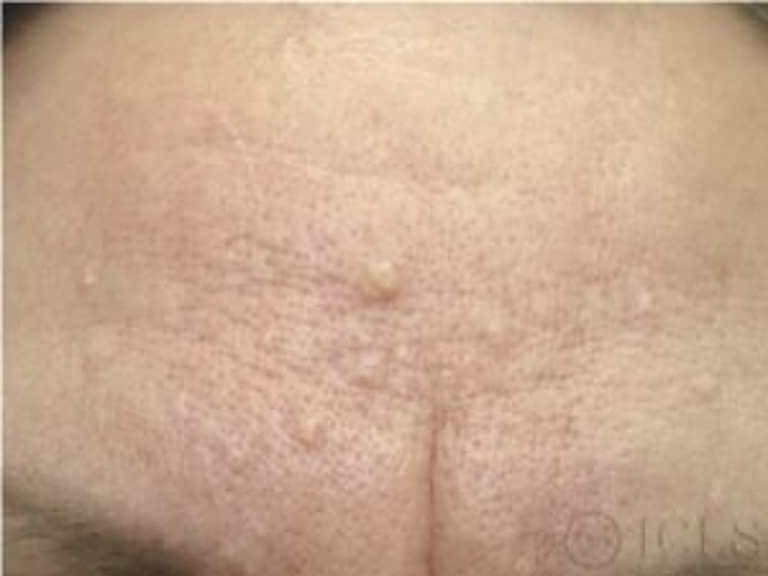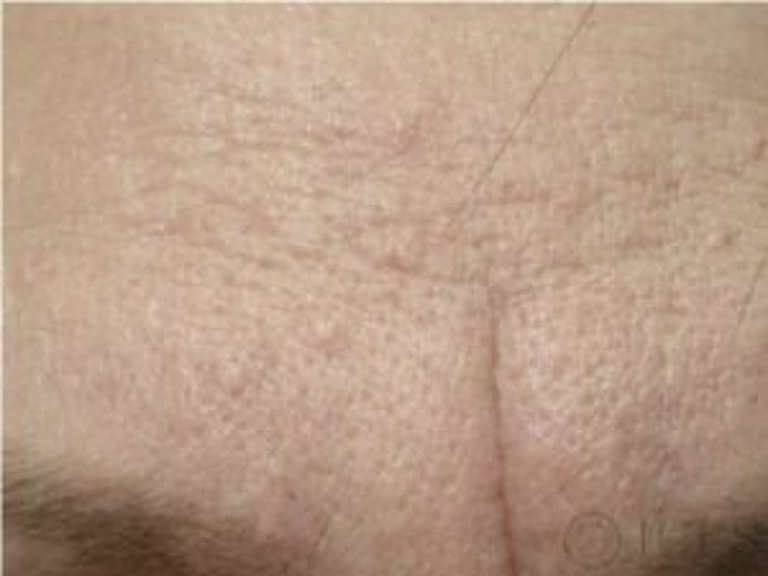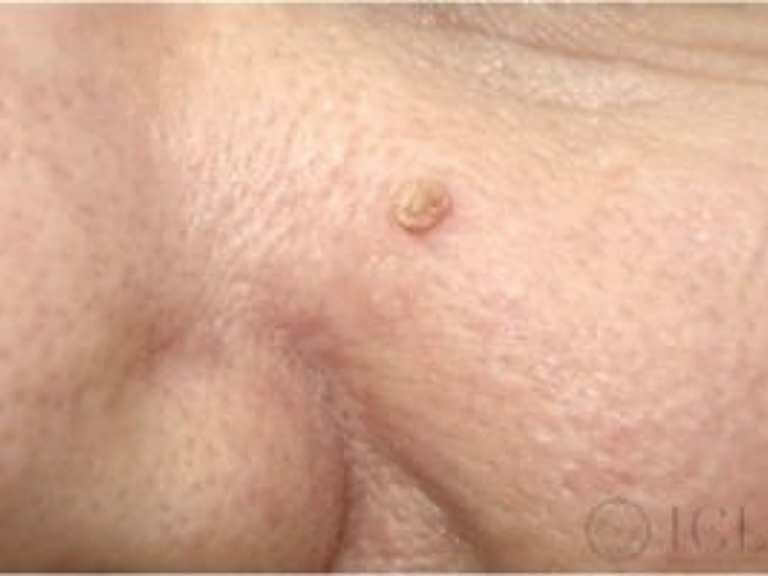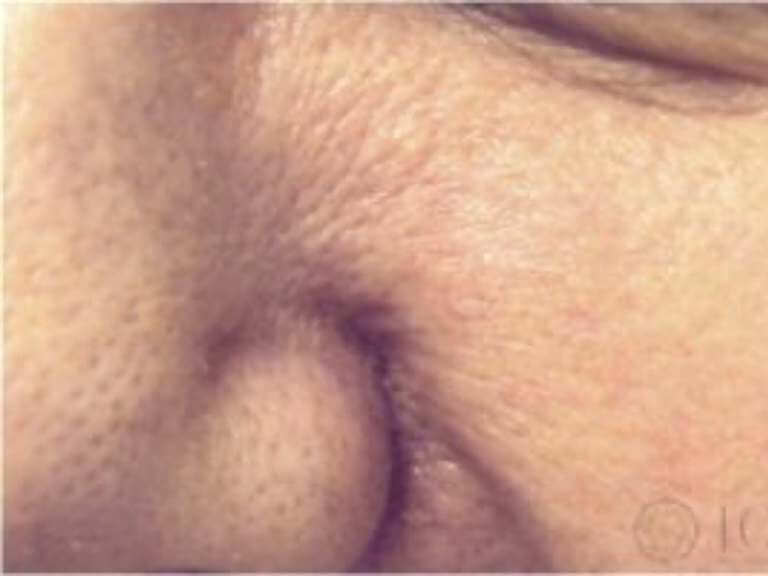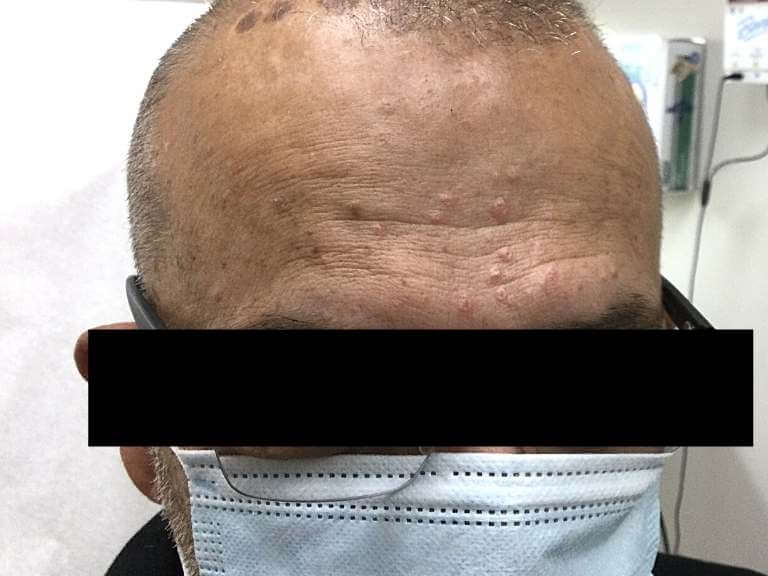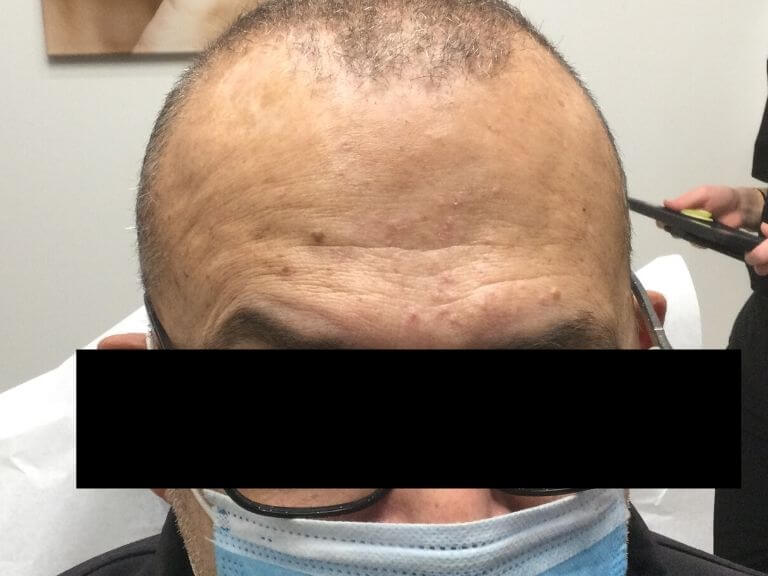Sebaceous Gland Hyperplasia Treatment in Oakville, Ontario
 Concern
Concern Sebaceous Gland Hyperplasia (SGH) is a term used to describe enlarged sebaceous glands seen on the forehead or cheeks of the middle-aged and older individuals. SGH appears as small shiny bumps up to 3mm in diameter. They sometimes look like little doughnuts – a circle with a hole in the middle. SGH occurs when the sebaceous glands become enlarged with trapped sebum (a mixture of fats and cell debris).
Treatment of SGH is not medically needed. Patients may elect removal for cosmetic reasons. Historically they have been treated with electrocautery, while larger ones may require a shave technique removal.
There is no way to prevent sebaceous gland hyperplasia, but patients can reduce their risk of reoccurrence by washing their face with a Zoe Bliss Brush and using a cleanser that has Salicylic Acid. Using a retinol can also help your patient’s sebaceous glands from clogging up. These products can be found on The Skin Store.

Before and After
Photos are for educational purposes only.
Featured Video
Frequently Asked Questions
-
Am I at risk of getting SGH?
Individuals with fair skin, especially those who have had lots of sun exposure, are more likely to get Sebaceous Gland Hyperplasia (SGH). There is also a genetic component if there is a family history of it. There is no way to prevent SGH, but patients can reduce their risk of re-occurrence.
-
How Much Does Sebaceous Gland Hyperplasia Treatment Cost in Toronto?
At ICLS, we offer specialized treatments for Sebaceous Gland Hyperplasia (SGH), with prices plus HST depending on the method chosen:
- Cautery: Starting at $250
- Shave Removal: $315
- Extraction: $400
- Full Face Treatment: $630 – $840
- Touch-Up Sessions: $260 – $370
To determine the best treatment option for SGH, we recommend booking a consultation with our experts.
At ICLS, our goal is to make your experience as seamless and comfortable as possible. We accept all major payment methods and provide third-party financing through iFinance and Beautifi, making it easier to manage your treatment costs.
If you have any questions about payments or require assistance, our friendly team is here to help.

